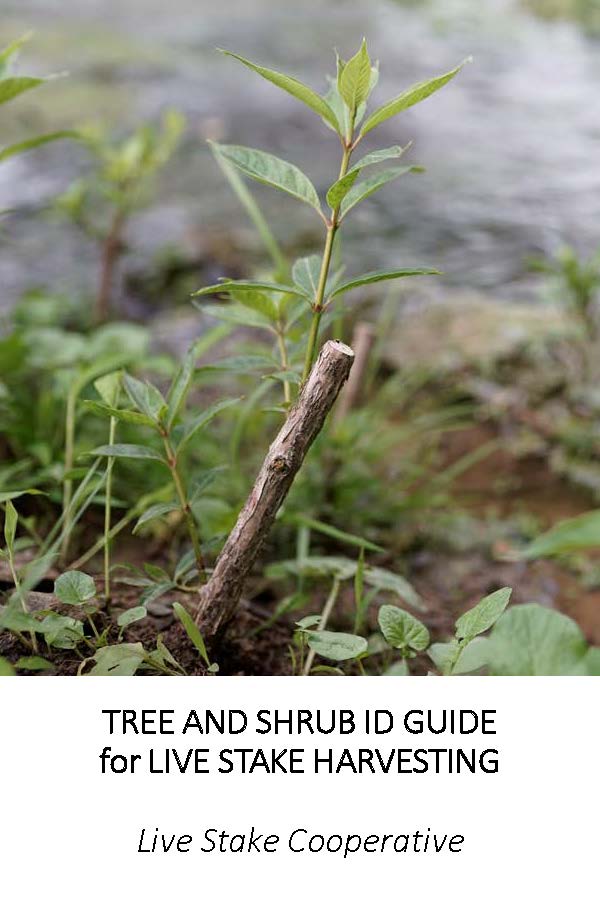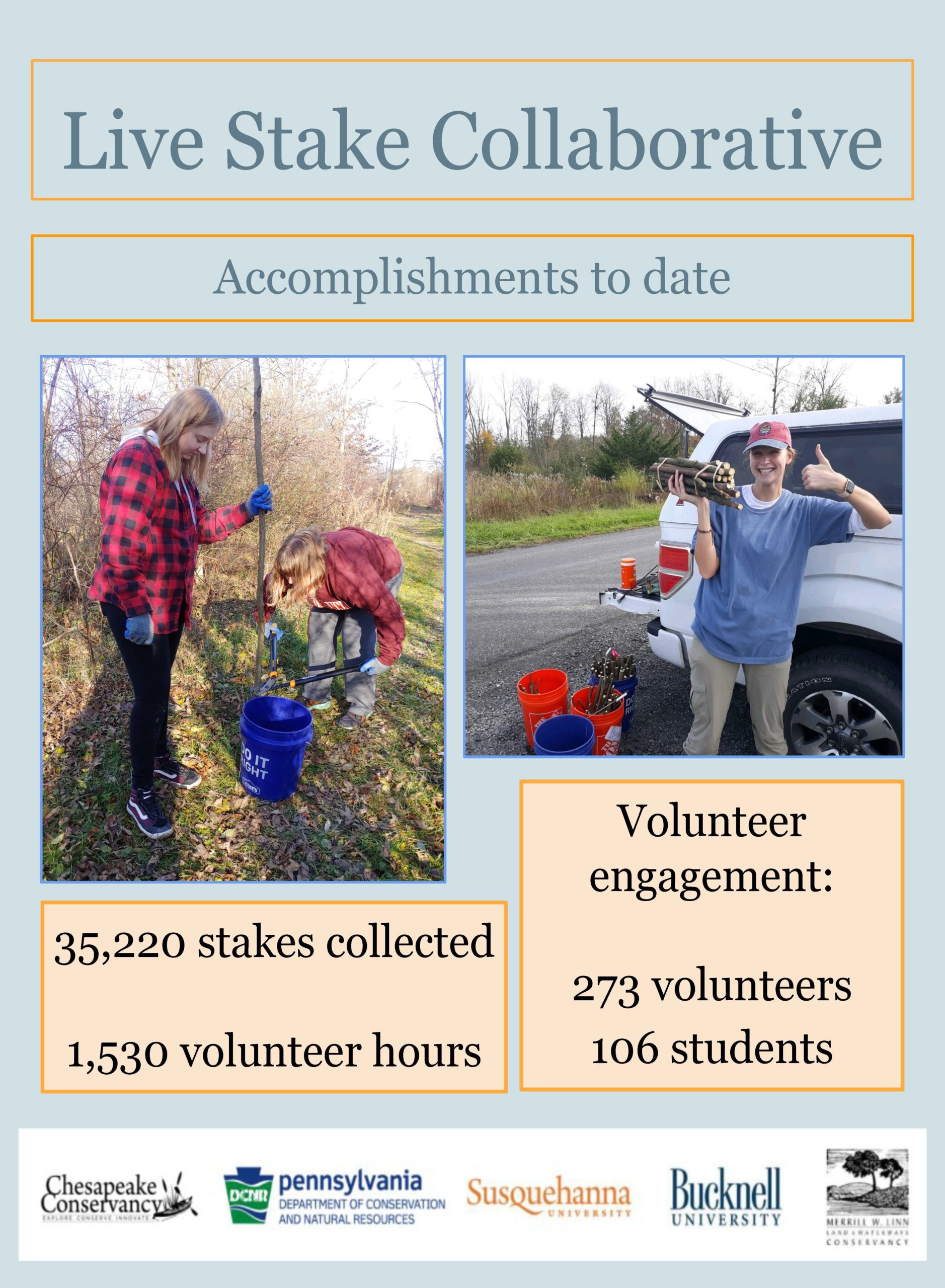Live Stake Planting
Chesapeake Conservancy works in partnership with Pennsylvania Department of Conservation and Natural Resources, Susquehanna University, Bucknell University, and the Merrill W. Linn Land and Waterways Conservancy to collect and plant live stakes, living tree and shrub branches that root readily when inserted into the soil. This work is funded by National Fish and Wildlife Foundation, The Hamer Foundation, and the 1994 Charles B. Degenstein Foundation.
These cuttings are embedded into the banks of streams for forest restoration projects. Growing trees on streambanks has a plethora of benefits, including minimizing loss of land, providing critical food for stream life, and filtering upslope runoff.
Learn more about the Live Stake planting process from this training video produced by Kelsey Mummert of PA DCNR and Chesapeake Conservancy’s Live Stake Coordinator Shannon Thomas.
Learn more about live stakes
Live stakes are branch cuttings from wetland tree and shrub species that can be planted into the ground alongside streams, they root readily and eventually grow into viable and successful trees. These live stake plantings help to stabilize the streambanks to stop sediment from eroding into the waterways as well as filter nutrients and other pollution from upslope runoff. They also provide food and shade to the water and the organisms that live there, such macroinvertebrates or fish. Live stakes are especially great because the methods that we use are super simple and super low cost.
This method would not be successful without the Live Stake Collaborative. The Live Stake Collaborative is a group of partner organizations working together to support the live stake initiative by working together to recruit and educate volunteers, store stakes, and provide leadership. The Collaborative partnerships include Chesapeake Conservancy, Pennsylvania Department of Conservation and Natural Resources, Susquehanna University, Bucknell University, and Merrill W. Linn Land and Waterways Conservancy.
The purpose of the Collaborative is to serve as a source of the limited resource that is live stakes for restoration project partners. The Collaborative engages with volunteers to collect stakes in the fall and winter. Stakes are cut to size, packaged, and stored in a cooler until being distributed to partners in the springtime to be planted. This Collaborative highlights the importance of locally sourced materials and sustainable and low-cost mechanisms to propagate and store as well as install stake material on restoration project sites.
Live stakes are often planted as part of forest buffer restoration projects. These projects take place where water quality health is poor, such as along or upstream of agriculturally impaired stream segments. We want stakes to grow where they are going to benefit the water quality the most.
If you’re interested in getting involved with the live staking initiative in any capacity, or just want to learn more about it, please contact our live stake coordinator, [email protected] or 570-372-4707.

